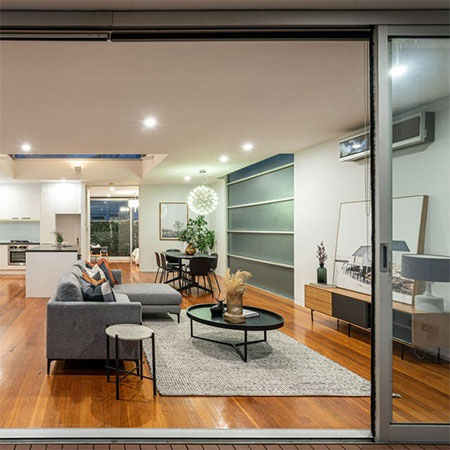Tips for Arranging Furniture in a Living Room
When furniture takes up more space than it should and it is hard to move freely through the living room, perhaps it's time to re-think the furniture arrangement for something better.
02/10/2023
Arranging furniture in a living room can be a daunting process if you are not sure what piece to start with or where everything goes. Not everyone has an inherent sense of design or the ability to decorate a room with ease. Some of us have to look at room ideas to get an idea of how it is done. And articles on the Web? There are so many conflicting opinions about what is right and what to avoid that it becomes almost impossible to decide the best course of action.
We have taken some expert tips for leading experts on social media to come up with some practical and doable ways to arrange furniture in a small or medium-sized living room:
Assess the shape and size of the living room
In an empty room that you are arranging for the first time or even one that is already filled with furniture, the first step is to assess the shape and size of the room. When there is furniture already in the room, you can combine this assessment with faults you have discovered with the existing furniture arrangement, for example: seating is too close together, hard to view the TV from certain seating areas, difficult to hold conversation. These are all legitimate concerns that can be addressed when moving furniture around for better arrangement.
Some of the factors to take into consideration when assessing the room are the following:
- Where are doors or openings located, as these will ultimately affect the best placement for furniture?
- Positioning of windows if wanting to take advantage of an outside view or avoid light glare.
- Location of architectural details, such as fixtures and trim, fireplace, etc., that you want to highlight or have as a focal point.
- How traffic will flow through the room, particularly if the living room is between two regularly used rooms or is a link with an outdoor area.
- Is the living room for a particular use or will it be multi-functional, for example, if the room is used as a family room or playroom for children in addition to a room for watching the TV / listening to music and will it also be used to entertain family and friends?
• Allow for doors and openings
Keeping the largest pieces of furniture in mind, such as a sofa or sectional, visually track a pathway through the room that you would use when walking in and out. This is the space that you want to keep as open as possible to not block freedom of movement through the space. If there is a space behind the furniture or a path that leads somewhere else, picture this as a defined line over which you do not want the furniture to block.
• Consider the position of windows
Windows play an important role in any room in a home and more so if the room does not receive a lot of natural light. Windows are also important to keep in mind if you have an outdoor space that is considered part of the indoors, such as an entertainment area, patio or deck. There are many ways to work around windows so that the flow of light or view is not obstructed.
Where windows are a part of the architectural design of the house, arrange furniture to allow these to be a feature or focal point.
• Create a focal point
A focal point is something that grabs your attention when you first walk into a room. It can be a stone or facebrick wall surrounding a fireplace, a stunning view outside a window, architectural detailing or simply a TV mounted on a dramatic backdrop. Furniture in a living room should be arranged to take advantage of an eye-catching feature so that it becomes the focus of the setting. Where you don't have any type of focal point, it is easy to make your own using paint for a feature wall, a dramatic piece of art, a set of display units or bookcases, or any other item you possess that grabs attention.
• Uses for the living room
For many, this can be the hardest to work around, particularly if the room dimensions limit what can be done. Decide on the ultimate purpose for the room and arrange furniture around this. Perhaps the TV can be placed in another room to allow the living room for conversation, or it might be a solution to reorganise a children's bedroom to create a play space to keep toys out of the living room, or it may be a solution to mount the TV in the living room and establish an outdoor area as a conversation zone. There are always ways to work around for the best solution.
Keep the above points clearly in mind when arranging furniture and you will have a living room that meets all your requirements and has good energy. Keep it simple, avoid placing too many pieces of furniture in the room and only use decor accessories to add colour, texture and pattern in accordance with the 'less is best' principle.








